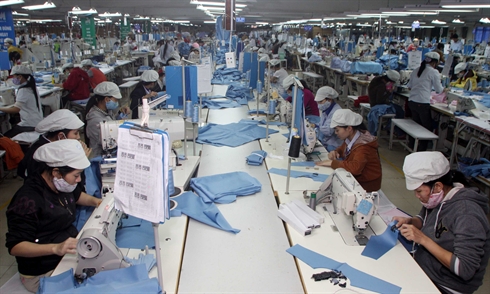EU and Vietnam rubber stamp free trade deal
All the versions of this article: [English] [français]

EurActiv | 2 December 2015
EU and Vietnam rubber stamp free trade deal
by Daniela Vincenti
The EU and Vietnam ticked the last box for a free trade agreement on Wednesday (2 December) after roughly three years of negotiations.
“The deal is good news for both sides,” said EU Trade Commissioner Cecilia Malmström after President Jean-Claude Juncker and Vietnamese Prime Minister Nguyễn Tấn Dũng signed the deal, formally concluded in August.
Until the last minute there were a number of pending issues that put the deal at risk but Malmström said Vietnam has agreed to the EU’s new approach to investment protection with a permanent tribunal rather than ad-hoc arbitration panels.
Prompted by massive opposition, the Commission has come in September with a new way of resolving disputes between investors and states. The new system is supposed to replace the old ISDS model in all ongoing and future negotiations.
EU exports to Vietnam are dominated by high-tech products including electrical machinery and equipment, aircraft, vehicles, and pharmaceutical products. Vietnam’s key export items to the EU include telephone sets, electronic products, footwear, textiles and clothing, coffee, rice, seafood, and furniture.
“Vietnam has a vibrant economy of more than 90 million consumers, with a growing middle class and a young and dynamic workforce. Its market has great potential and offers numerous opportunities for the EU’s agricultural, industrial and services exports,” added Malmström.
Other commissioners have rejected claims that a deal with put at risk some agricultural markets.
According to trade expert Iana Dreyer, Vietnam is unique in the sense that the country is ruled by a Communist party, yet it has considerably opened up its economy over the last fifteen years. “Vietnam joined the WTO in 2007 and is busy signing free trade agreements across the world. Most importantly, Vietnam signed up to TPP,” she said.
Apart from the much richer fellow in the Association of Southeast Asian Nations (ASEAN), such as Malaysia, Vietnam is the only ASEAN country that has signed up to Trans-Pacific Partnership. Under that deal, Vietnam has signed on to US-sponsored rules disciplining the behaviour of state-owned enterprises – rather unusual for a communist country, Dreyer insisted.
The new agreement is indeed seen as a milestone in the trade relationship between the EU and ASEAN countries. After the conclusion of negotiations with Singapore in 2014, Vietnam is the second country in the Association of Southeast Asian Nations (ASEAN) that the EU has concluded free trade negotiations with. Negotiations on a similarly long-planned free trade deal with Thailand was suspended after the country suffered a military coup in May 2014. A senior Commission trade official last month told EurActiv that there was "probably zero" chance of the deal being resurrected under the current junta.
Sustainability chapter
The agreement includes a chapter on sustainable development, which covers both labour and environmental issues. This includes commitments to the International Labour Organisation (ILO) conventions on issues such as the right to organise and the abolition of forced labour.
Hanoi also made this political concession to Washington when negotiating TPP. Indeed, it has accepted introducing a minimum wage, and laws protecting the rights of labour unions.
Some of these concessions appear to be geo-strategic, experts said. “One of the main motivations for Vietnam is to deepen ties with key powers across the world in the face of the rise of its big neighbour, China, with which it is locked into territorial disputes,” Dreyer said, adding that the country is also trying to lock in existing unilateral trade preferences under the EU’s General System of Preferences which are progressively expiring as Vietnam grows richer.
The text of the full agreement will be made public in a few weeks, followed by the legal review and translation of the agreement. Then, it will be presented to the Council of Ministers and the European Parliament for ratification. The deal has to be ratified by 28 member states’ parliaments.





